
North Cascades Glacier Climate Project 2020
August 2020. 1.5 weeks of backpacking and translating observations made by the The North Cascades Glacier Climate Project (NCGCP) into a series of acrylic and watercolor paintings as an artist in residence. The NCGCP was founded in 1983 by Dr. Mauri Pelto. For nearly 4 decades Dr. Pelto and teams of researchers measured and studied the same group of glaciers.
Their work creates a continuous record of the changes happening each year, which is critical to our understanding of how the ice is impacted by climate change. Since his project began, four of the glaciers he monitored have disappeared, and all are experiencing severe loss due to global warming. On average the glaciers of the region have lost 30% of their volume and many have retreated hundreds of meters up the mountain slopes.
I had the privilege of joining Dr. Pelto and his team for most of their 2020 season. While they collected data on the glaciers, I sat on moraines or ridgelines next to the glaciers to create paintings that integrated the data and observations they shared with me. I created 3 large (18x24 inch) acrylic paintings and additional watercolor paintings imbued with data, observation, and personal experience.
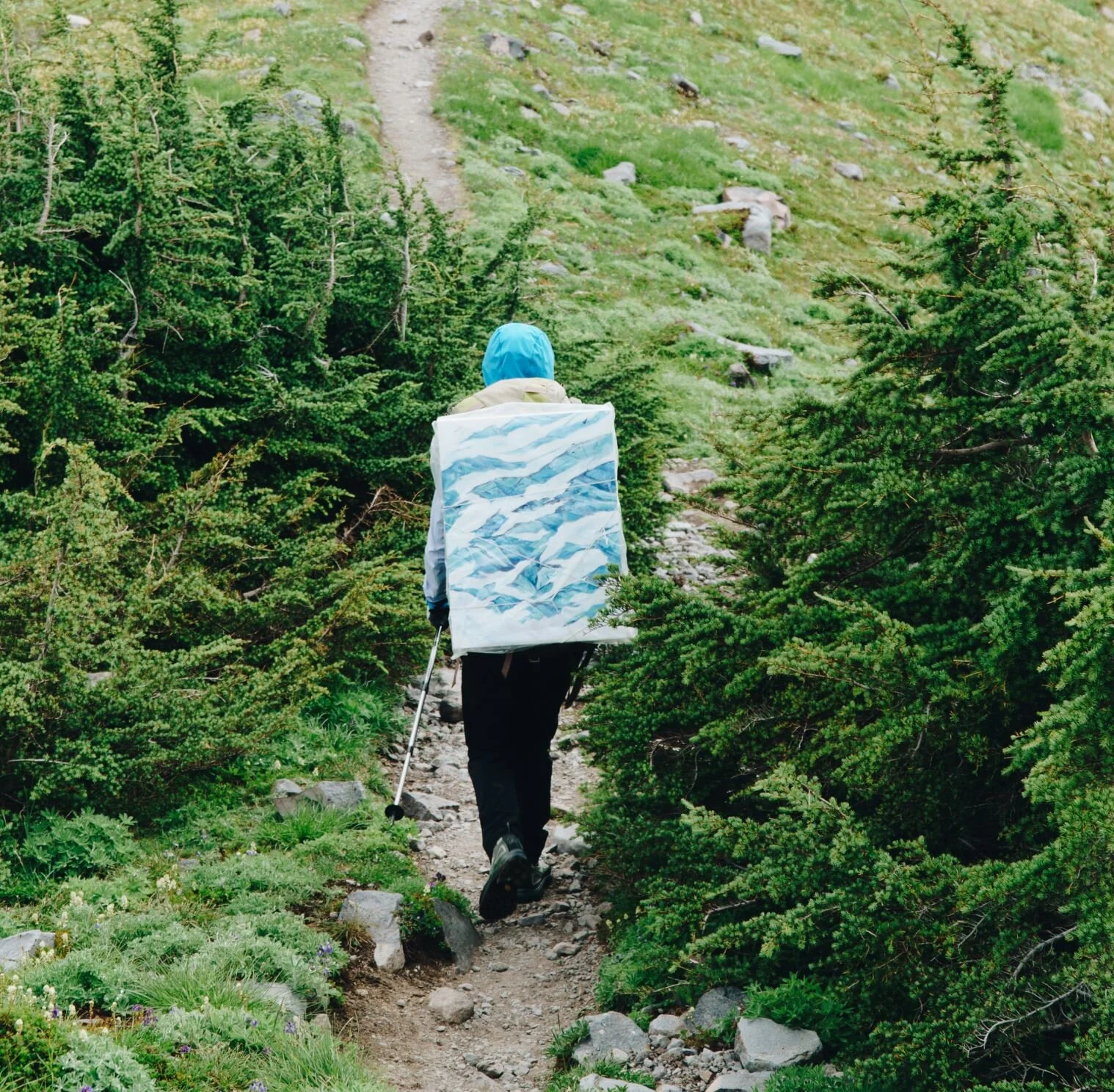
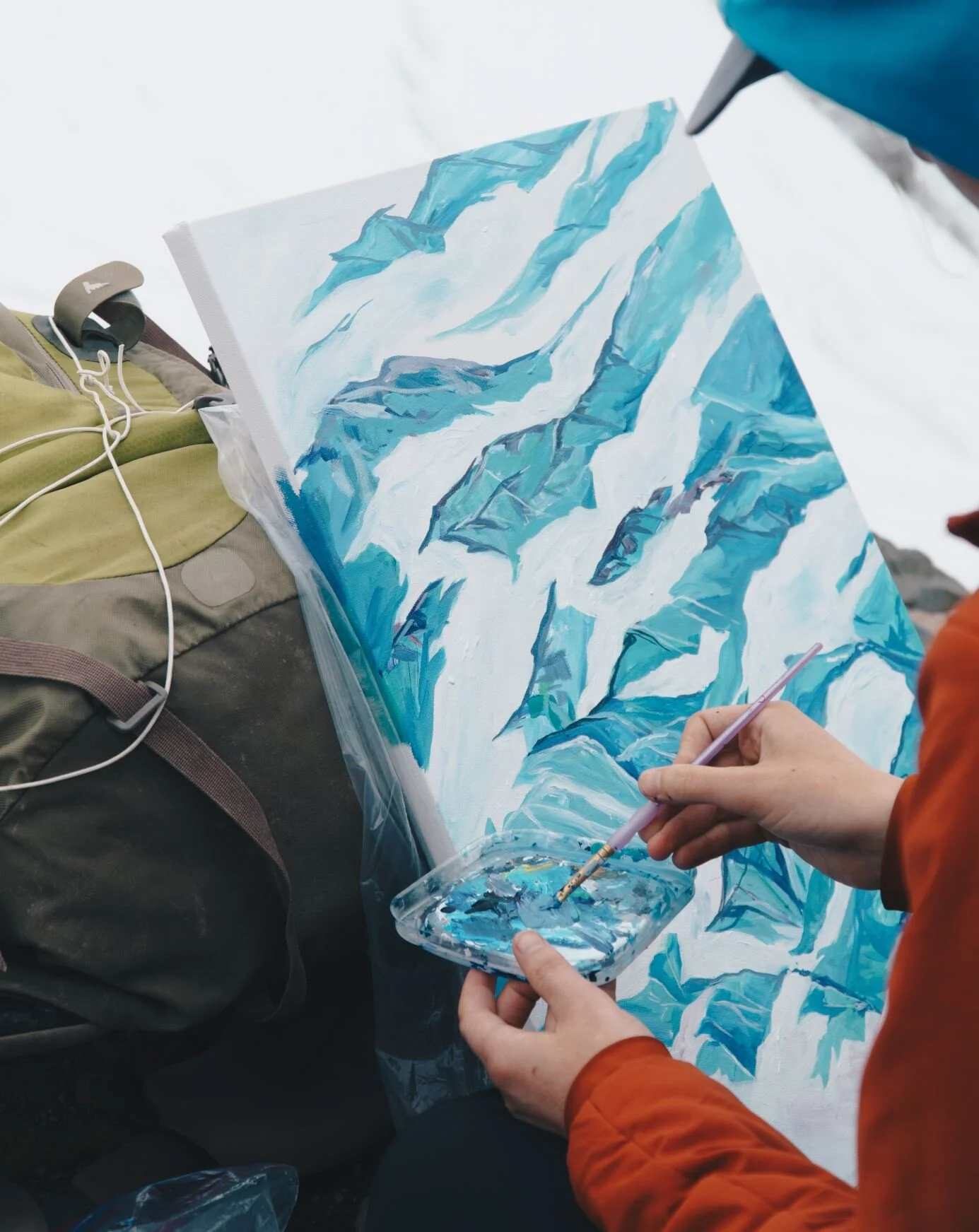
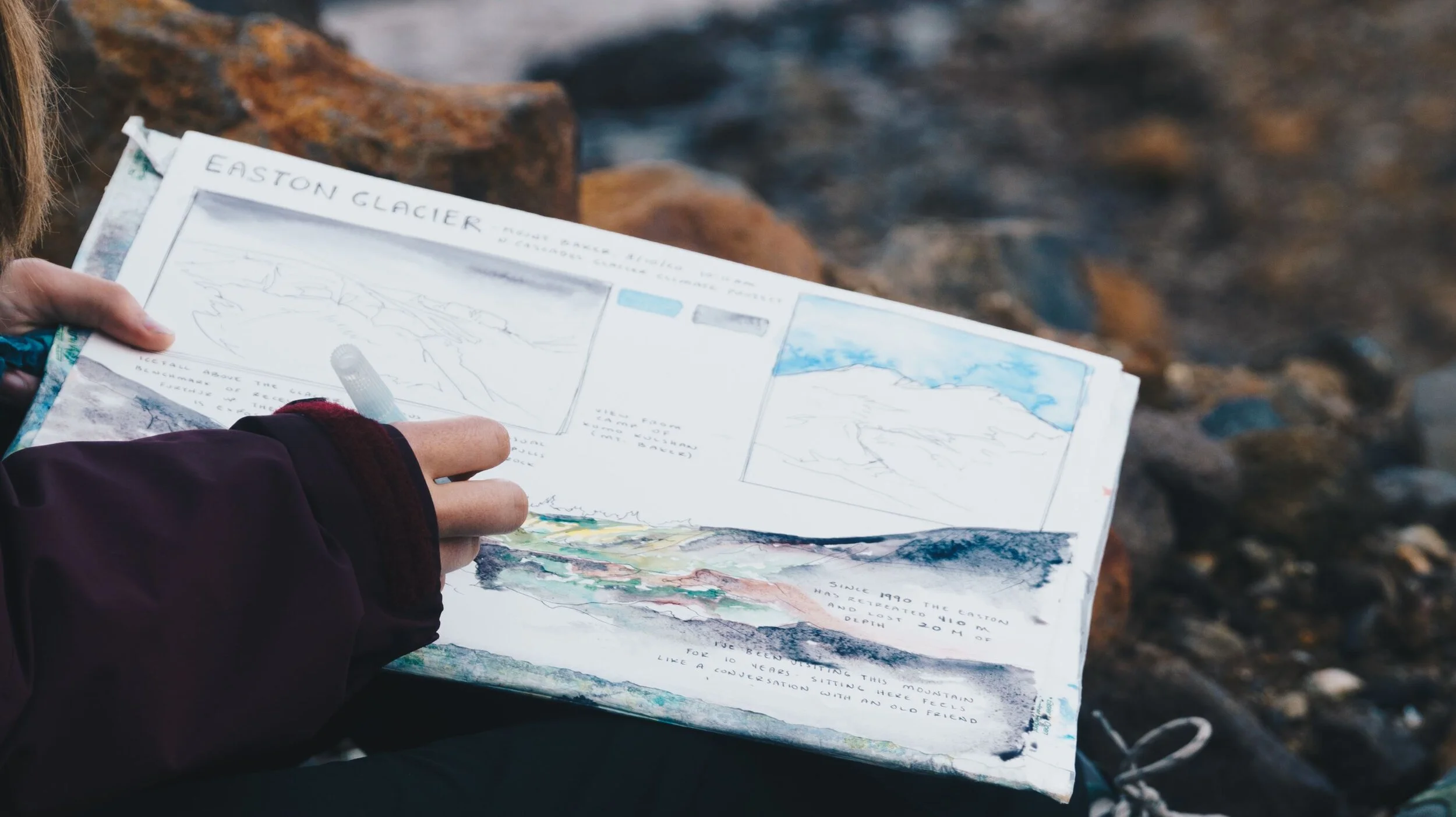





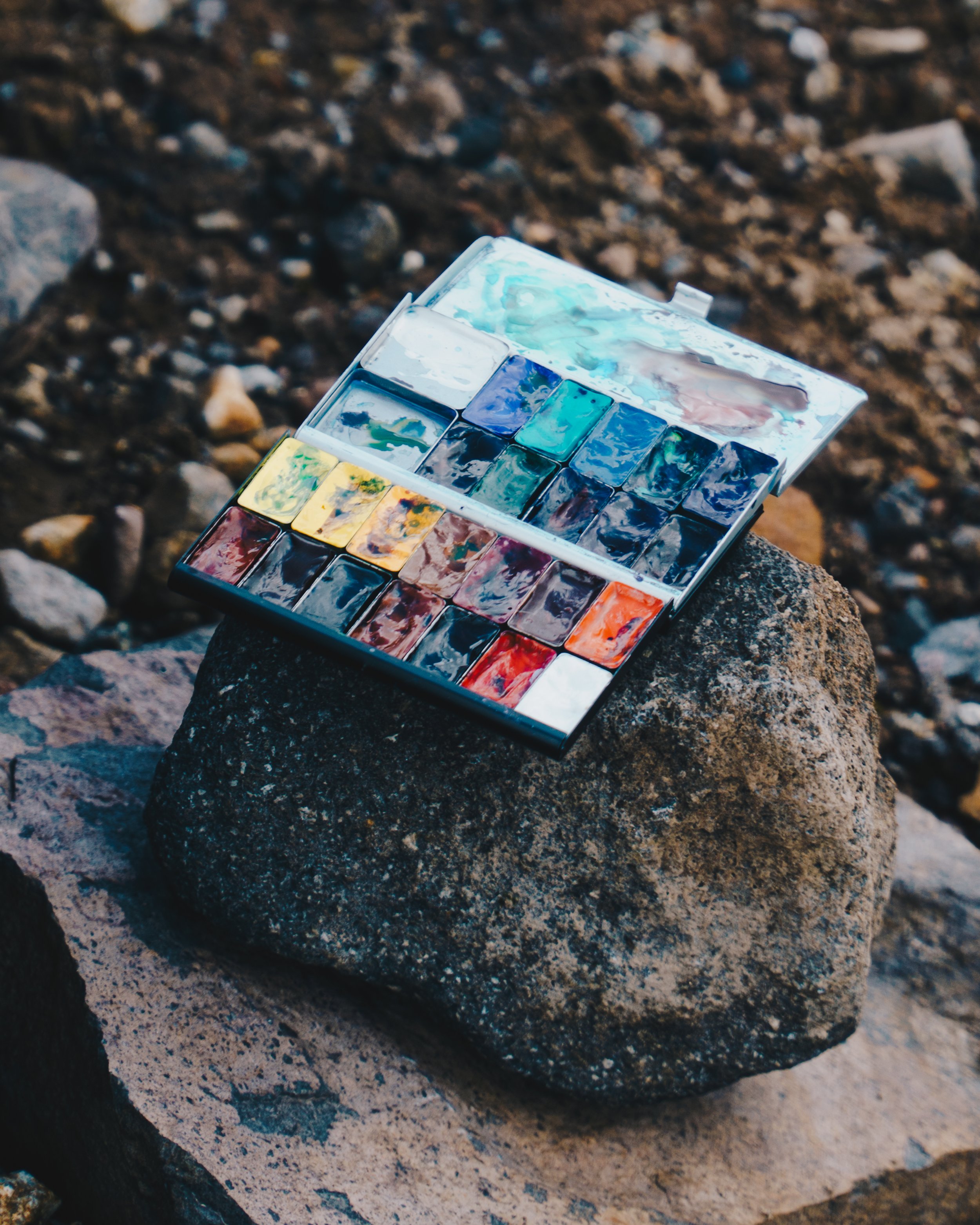
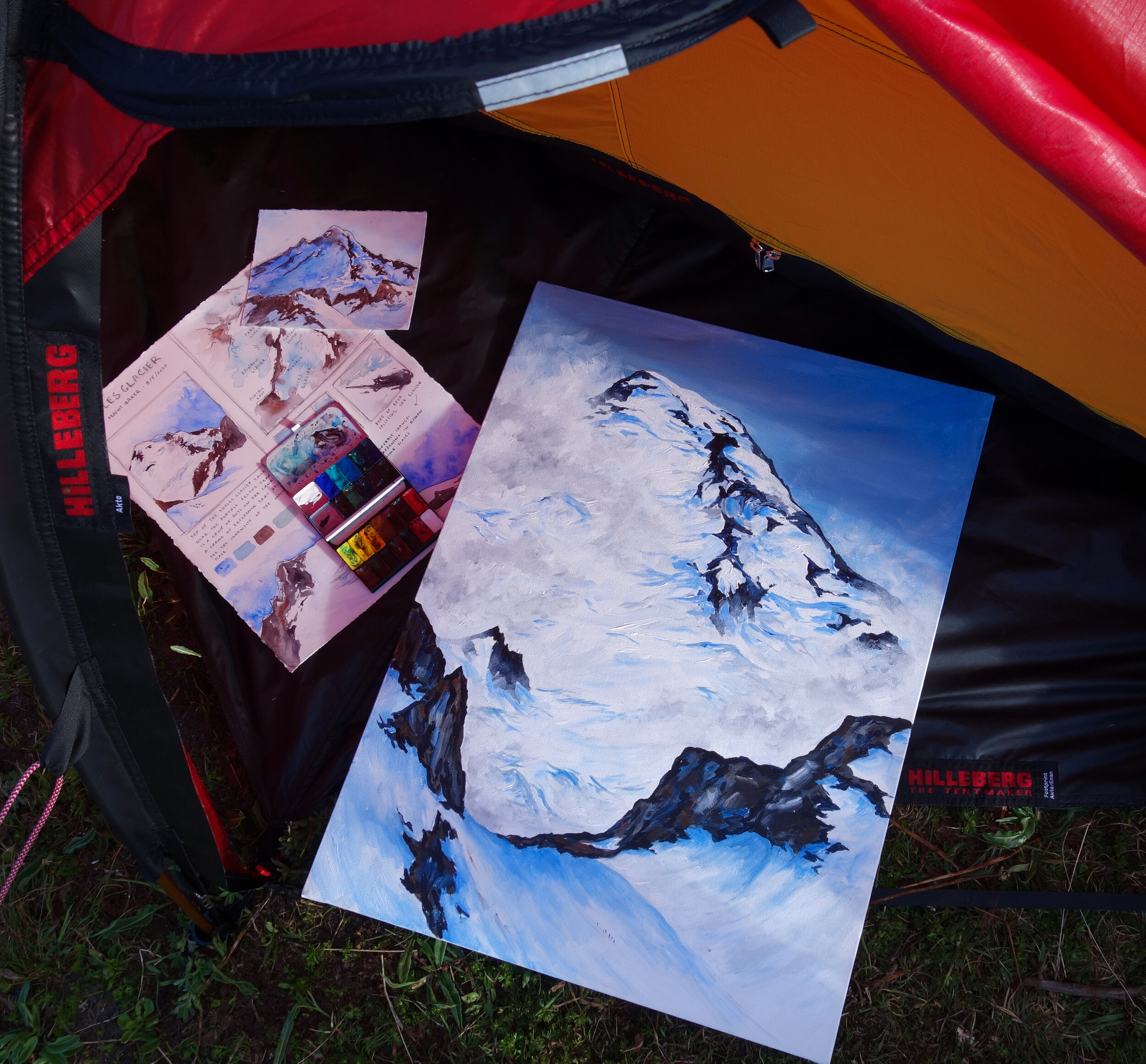

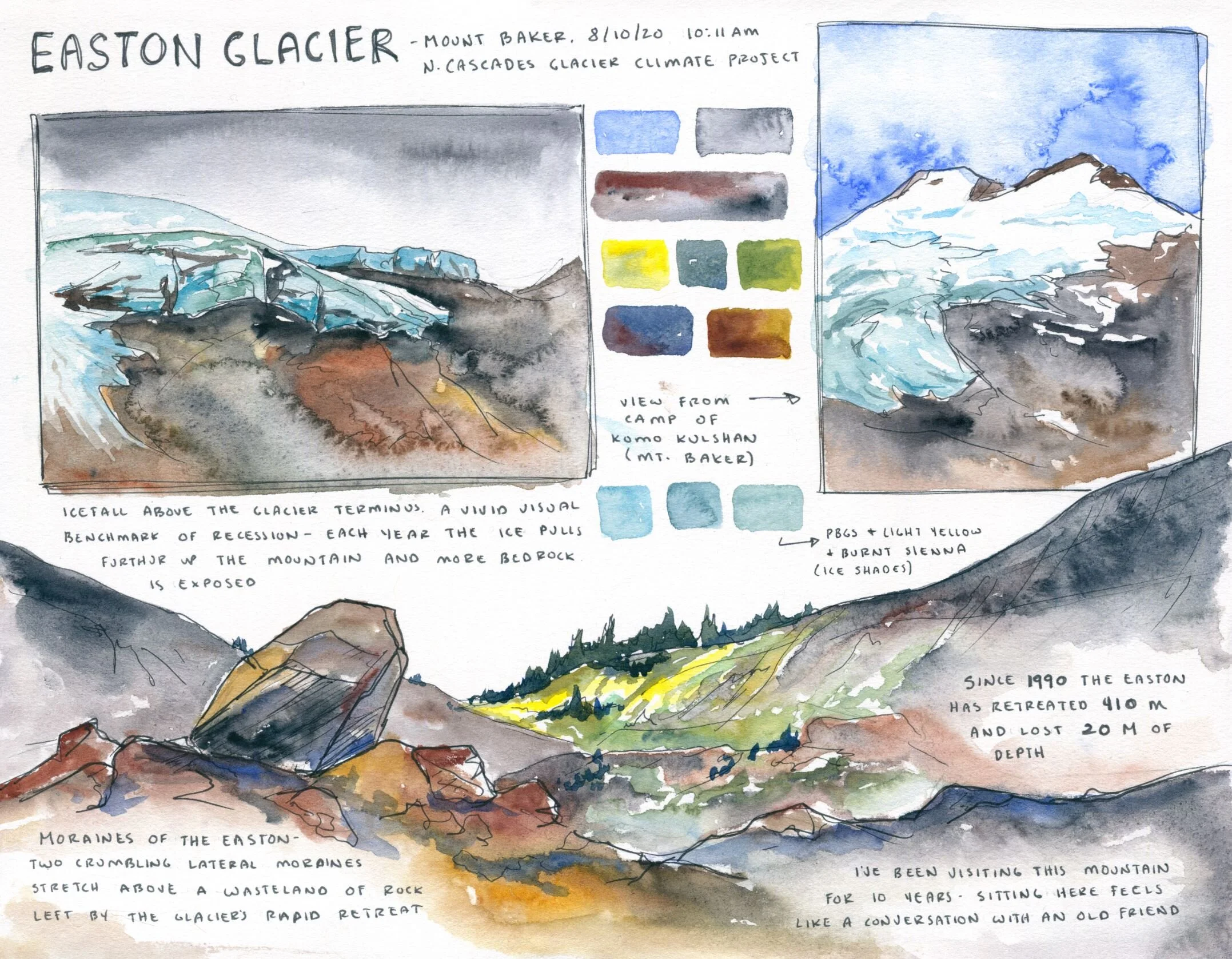
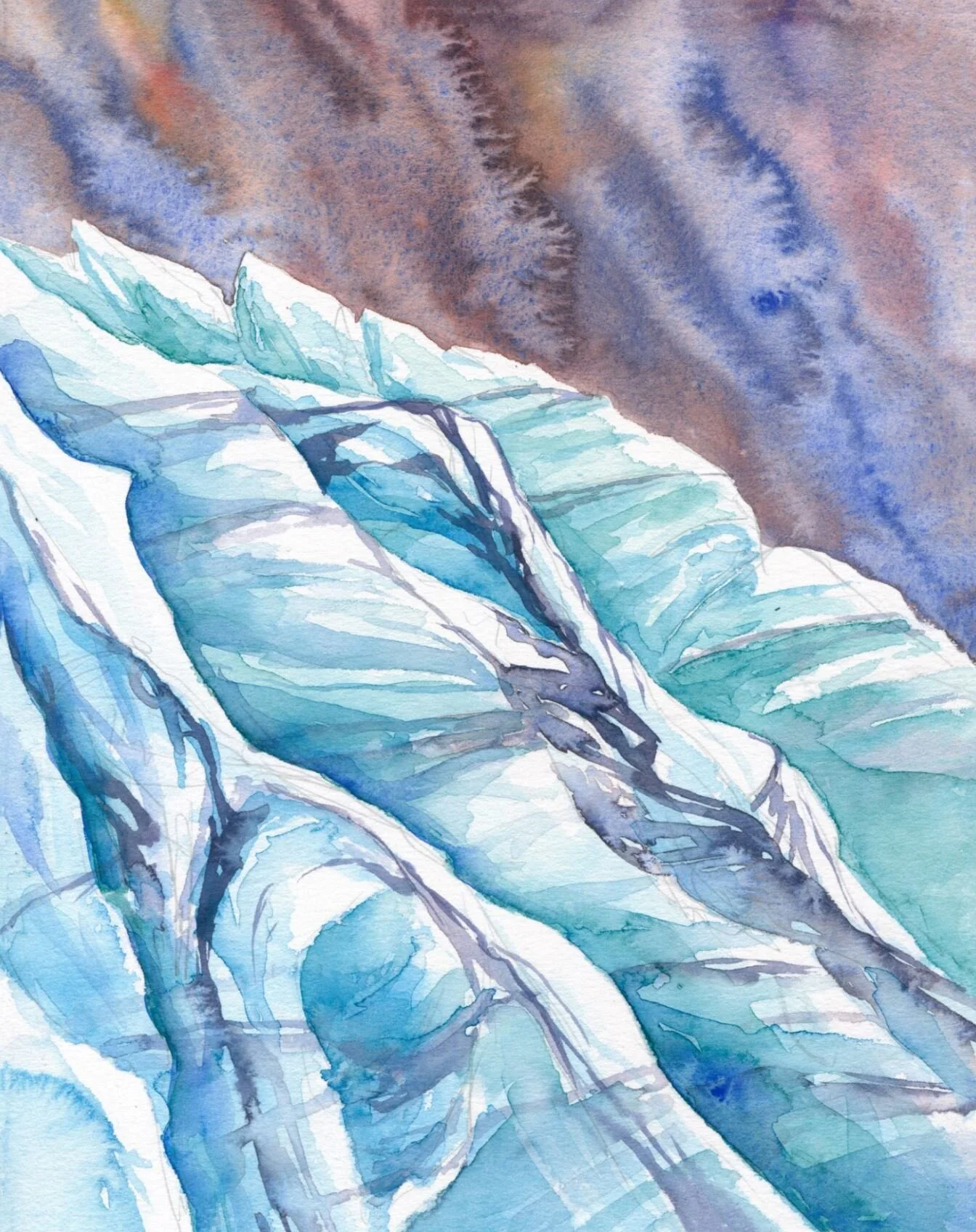


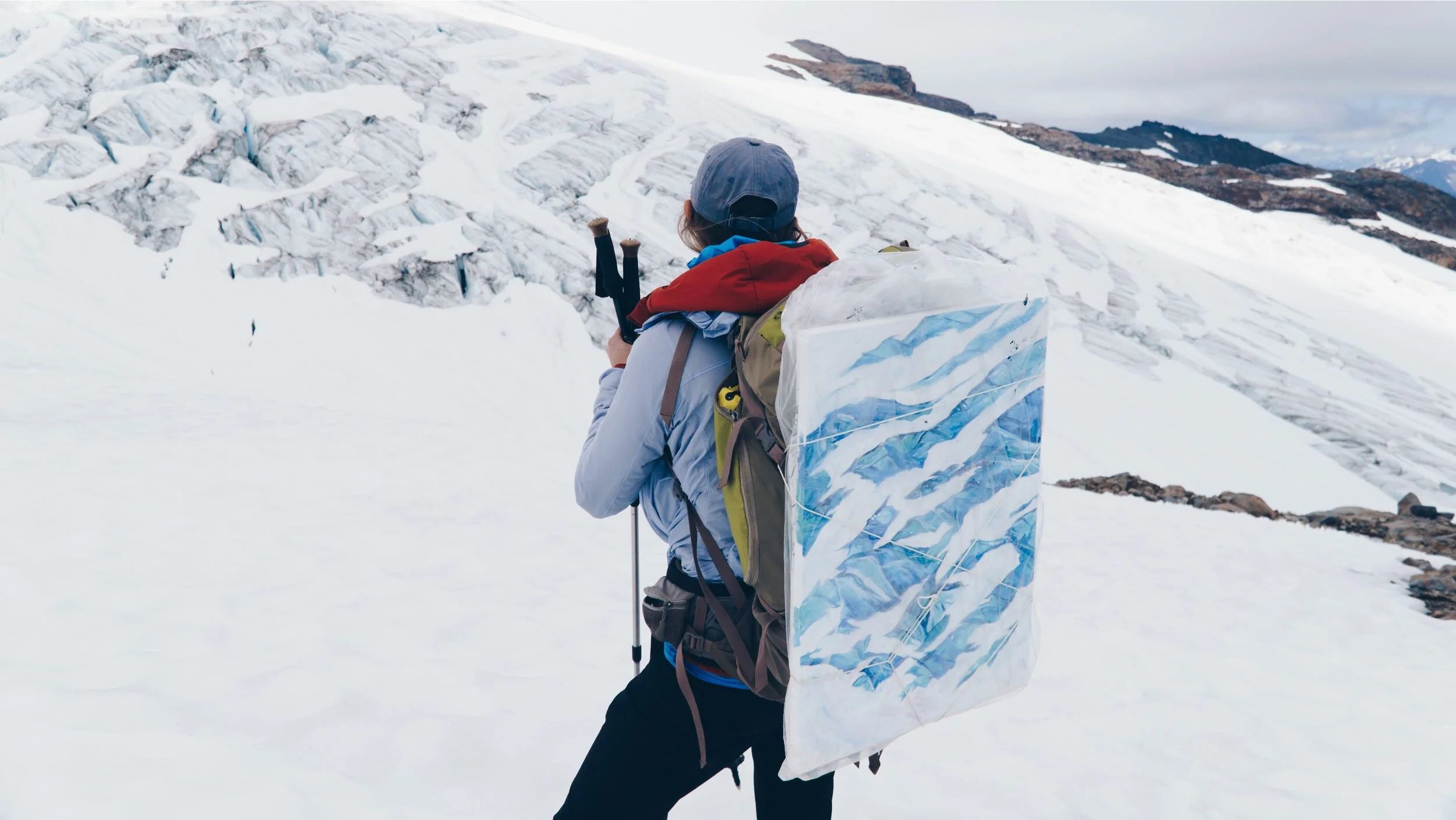


Glacier Triptych, Acrylic on canvas. 18x24”
On-site paintings created on site at the Lower Curtis Glacier on Mount Shuksan, and the Easton and Sholes Glaciers on Mount Baker. For nearly a decade I have carried watercolor paper and paints with me into the backcountry, and this was the first time I strapped a canvas to my pack (increasing its weight to nearly 42 lbs) and created acrylic paintings on site. Creating with acrylic outside presents unique challenges, from wind turning a canvas into a sail to meticulously collecting every drop of waste water to hike out with me.
The subject of each painting was driven by the observations of the NCGCP team, such as the amount of blue ice visible to the changed shape of glacier margins.
